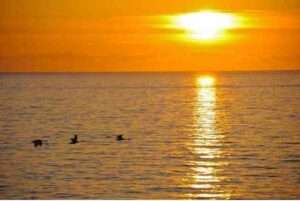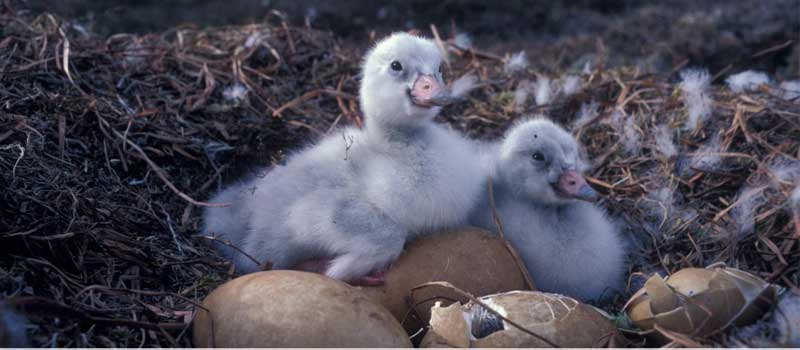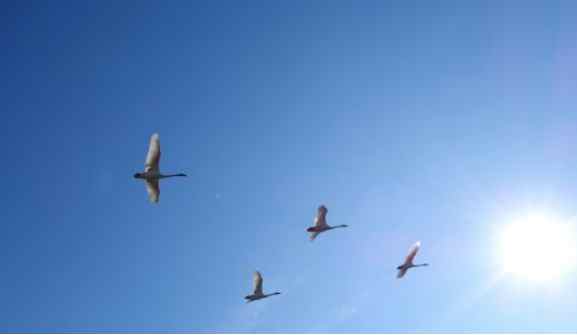
Swan — Qugyuk
Qugyut qat’rtarut. – The swans are white.
The tundra swan (Cygnus columbianus), a common visitor to Kodiak’s coastal wetlands, is one of three species of swans found in Alaska and the largest Alaska bird. This all-white bird is distinguished by a teardrop-shaped splash of yellow on either side of its black bill. Tundra swans summer in Alaska, migrating up to four thousand miles each fall to wetlands in the eastern United States. At age two, young swans develop their white adult plumage and mate for life. In the Kodiak Archipelago, tundra swans are particularly common in the open, grassy environments of southern Kodiak Island. Here, about two dozen breeding pairs raise cygnets each year.
Alutiiq people once harvested swans for food and raw material. Hunters captured these large birds with bows and arrows as well as snares. Archaeological collections indicate that their long, sturdy, lightweight wing bones were commonly fashioned into awls: tools for punching holes in leather.
An Alutiiq story about a beautiful female swan illustrates the human-like spirit inside of every animal. In this tale, the swan removes her skin to go swimming, revealing a beautiful woman. A young man steals her skin and when she can’t flee, they marry. Later the swan-woman escapes the man’s village and takes their young son. The man begins a long quest to find his family and eventually arrives in a special bird world. Here, in the far-off place where birds migrate in the winter, he sees naked birds painting on their colorful plumage. When he begs to travel back to earth with the birds, the raven agrees to carry him. But he is too heavy for the birds and falls into the ocean, where he becomes a white whale.





